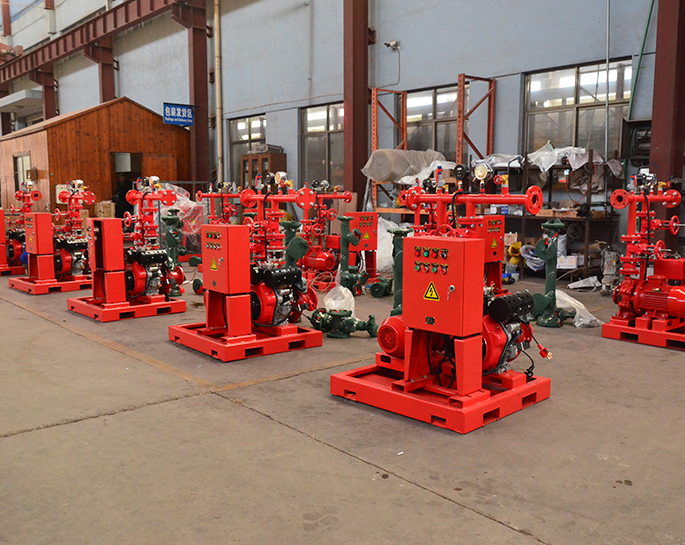Cavitation in fire pump impellers can lead to reduced pump efficiency and potential damage to the pump. To prevent cavitation and ensure optimal pump performance, several measures are taken:
1. **Proper Pump Sizing:**
- Ensuring that the fire pump is appropriately sized for the system's requirements helps prevent overloading and cavitation. Proper sizing considers factors such as flow rate, head, and system characteristics.
2. **NPSHA (Net Positive Suction Head Available):**
- Calculating and maintaining an adequate NPSHA is crucial. NPSHA represents the amount of fluid energy available at the pump suction and should exceed the NPSHR (Net Positive Suction Head Required) to prevent cavitation.
3. **Suction Piping Design:**
- Proper design of suction piping includes minimizing the number of bends and restrictions, ensuring sufficient diameter, and avoiding abrupt changes in direction. This helps maintain a smooth and steady flow into the pump.
4. **Air Elimination Devices:**
- Installing air elimination devices, such as air vents or automatic air release valves, helps remove entrapped air from the system. Air pockets can lead to cavitation if not properly addressed.
5. **NPSHR Curves:**
- Understanding the NPSHR curves for the specific pump model is essential. These curves provide information on the pump's sensitivity to cavitation at different operating conditions.
6. **Impeller Design:**
- The impeller design plays a crucial role. Properly designed impellers with the right number of blades, shape, and clearances help minimize the risk of cavitation.
7. **Operating Speed:**
- Operating the pump within the specified speed range is important. Exceeding the recommended speed can lead to increased suction pressure and contribute to cavitation.
8. **Regular Maintenance:**
- Regular inspection and maintenance of the pump system, including impellers, seals, and bearings, are essential. Any wear or damage should be promptly addressed to prevent cavitation.
9. **NPSH Margin:**
- Maintaining a margin of safety between the NPSHA and NPSHR is crucial. A comfortable margin ensures that variations in system conditions or temporary pressure drops do not lead to cavitation.
10. **Education and Training:**
- Proper education and training of personnel involved in the operation and maintenance of fire pump systems are important. This includes understanding the factors that contribute to cavitation and taking preventive measures.
11. **System Pressure Control:**
- Implementing pressure control measures in the system, such as pressure relief valves or control valves, helps prevent pressure fluctuations that could contribute to cavitation.
12. **Vibration Monitoring:**
- Monitoring pump vibrations can help detect potential issues early on. Excessive vibrations may indicate cavitation or other problems that need attention.
By implementing these measures and maintaining a proactive approach to pump system management, the risk of cavitation in fire pump impellers can be minimized, ensuring efficient and reliable operation.



